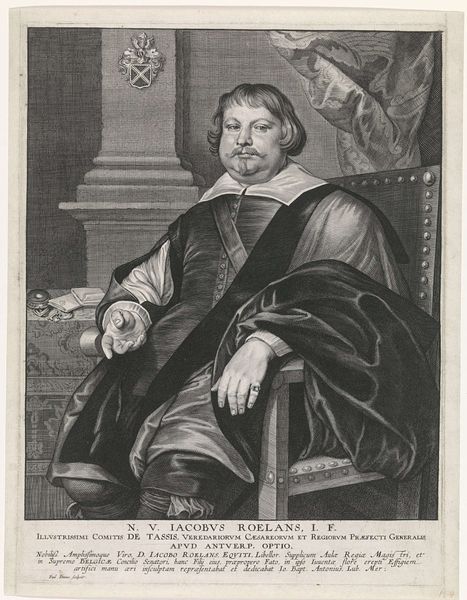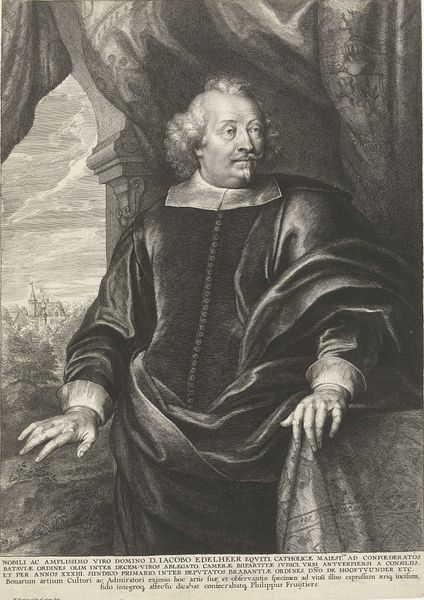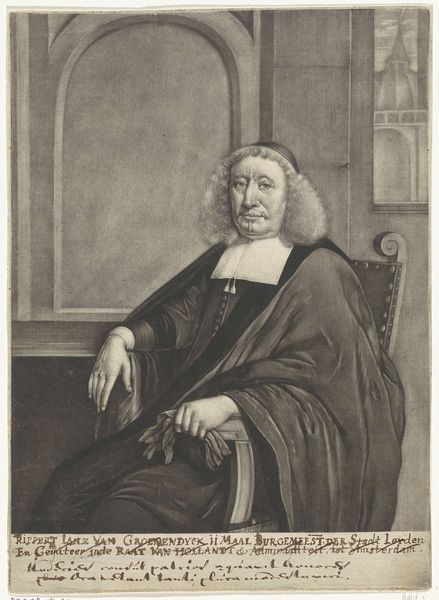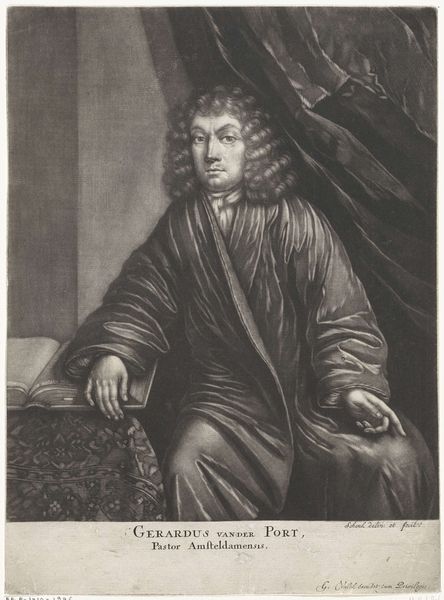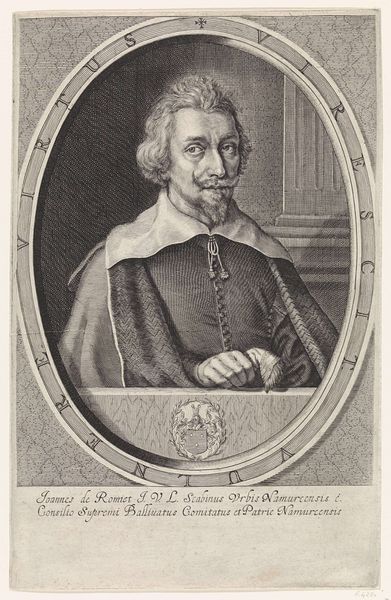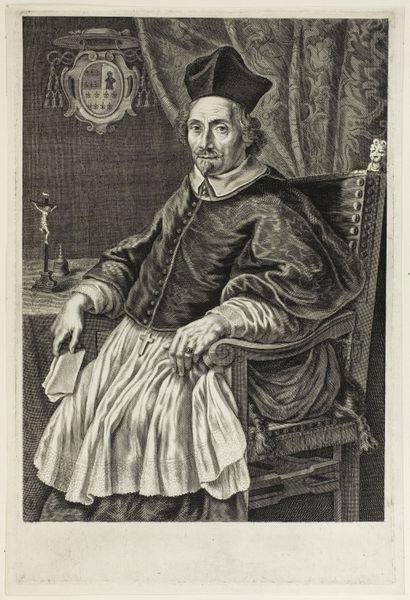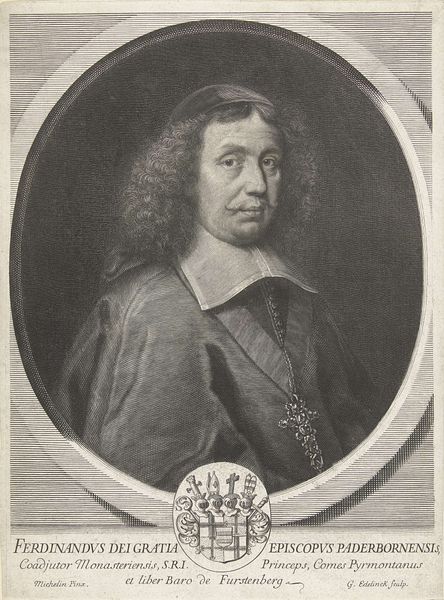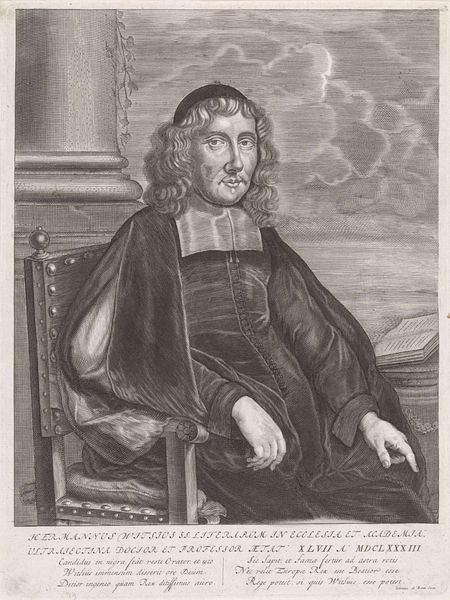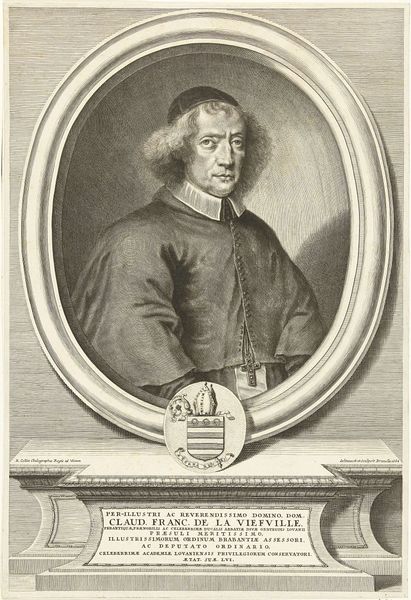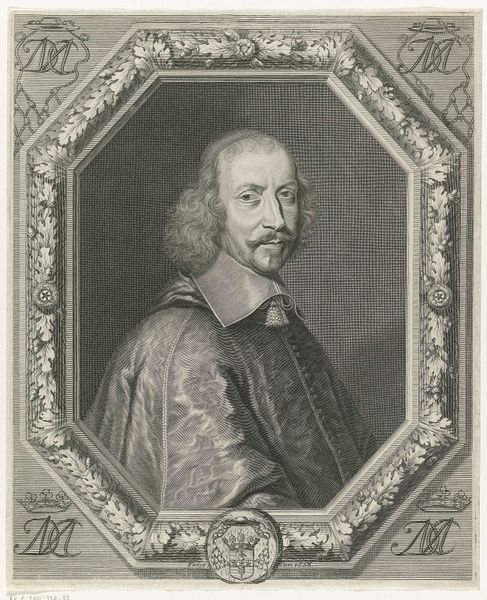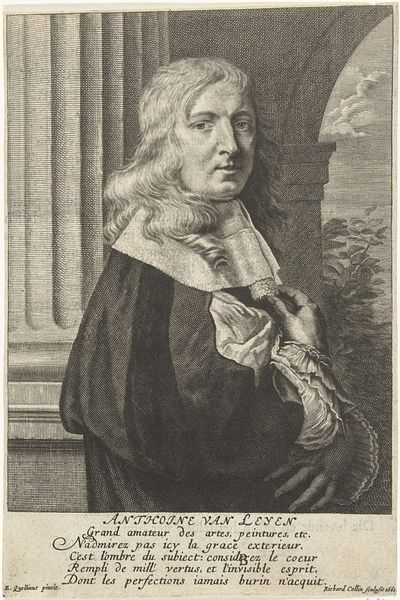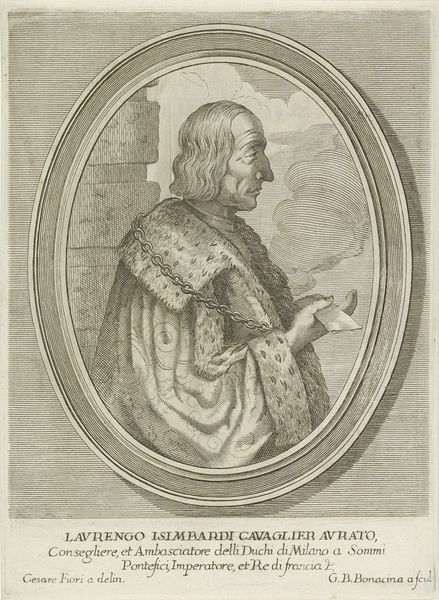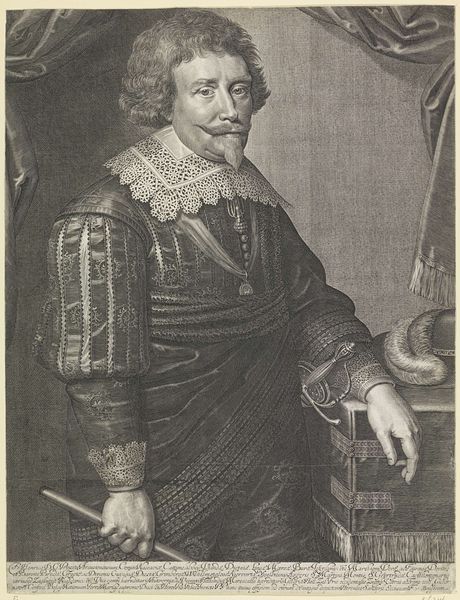
print, intaglio, engraving
#
portrait
#
baroque
# print
#
intaglio
#
old engraving style
#
engraving
Dimensions: height 348 mm, width 241 mm
Copyright: Rijks Museum: Open Domain
Curator: Here we have Gérard Edelinck's "Portret van Charles-Maurice le Tellier," created between 1692 and 1707. It’s an intaglio print, currently housed at the Rijksmuseum. Editor: The detail is extraordinary. The tonality feels like twilight – everything fading into nuanced grays. What immediately grabs me is the sheer composure of the subject, balanced within a tightly constructed composition. Curator: Le Tellier, Archbishop of Reims, clearly wishes to be seen in a specific light. The accoutrements of ecclesiastical and aristocratic power surround him: the books suggesting his learnedness, the ornate chair symbolic of his elevated station, and the Order hanging around his neck connoting service and honor. Editor: Note the careful articulation of fabric, from the heavy folds of the drape to the delicate lace at the cuff. It’s not merely decorative; each element contributes to a deliberate representation of social standing, visually signifying prestige and refined sensibility. The line is meticulously plotted. Curator: Precisely. His vestments communicate a kind of performance, suggesting not just the personal authority of le Tellier but the larger cultural authority of the Church during that era. Look at how the crest beneath him amplifies a message of noble descent and entitlement. Editor: The print medium, with its inherent linearity, also reinforces a certain structured quality to the scene. It's a constructed reality where everything is deliberately positioned to convey a precise narrative of status and identity. There is so little negative space in the picture, creating almost claustrophobic sense of precision. Curator: The print participates in a complex cultural encoding. Edelinck captures more than just the surface features; he encapsulates the deeply held societal values embedded in representations of power. He understood how to make portraits echo collective memory and uphold specific cultural meanings. Editor: Indeed, studying works such as this demonstrates the potency of artistic interpretation in reflecting the broader political and social contexts that influence every mark. What appears at first a simple portrait unveils intricate interplays of control, belief and perception.
Comments
No comments
Be the first to comment and join the conversation on the ultimate creative platform.
